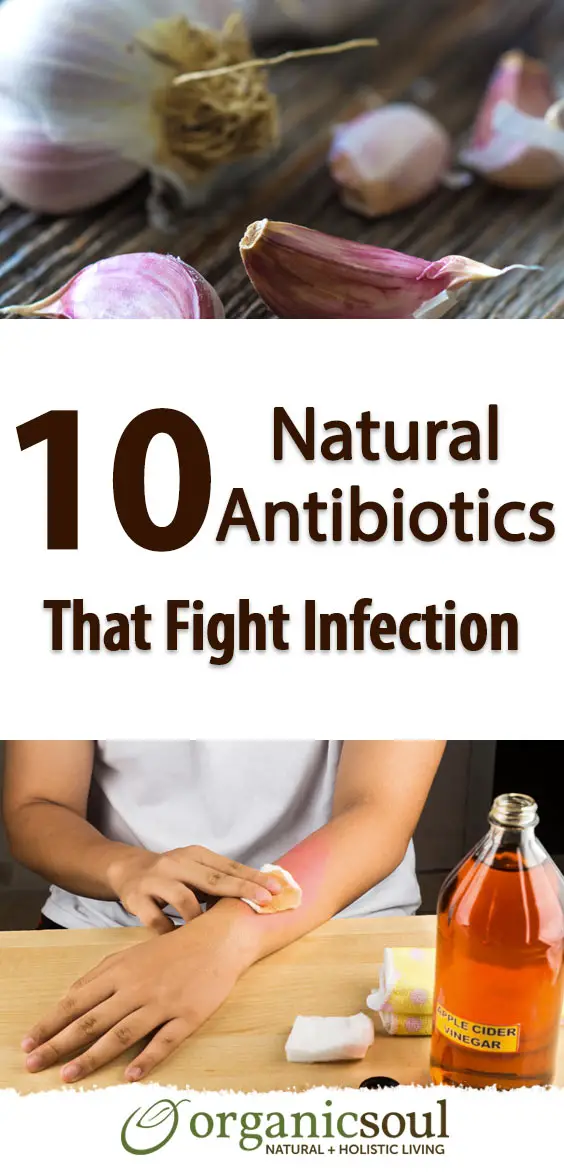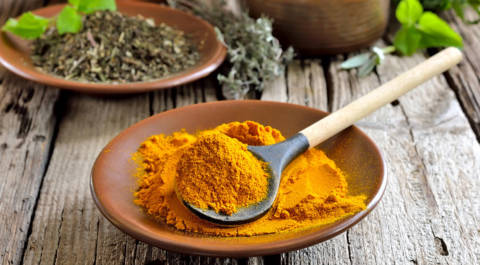
Once penicillin was discovered in the late 1920s, it signaled the beginning of a new way for doctors to treat ailments, otherwise known as the start of when physicians began prescribing conventional antibiotics to their patients.
Like Organic Soul on Facebook
Although antibiotics are sometimes lifesaving for the people who need them, they're also often over-prescribed. This problem has led to antibiotic resistance, meaning that antibiotics that used to be very effective are now sometimes nearly useless against some types of infections.
Some health experts argue conventional antibiotics should only be used as a last resort. If you're looking for ways to reduce your dependence on conventional choices, there are numerous natural antibiotics you can use to fight infections.
Learn about 10 of them by reading the information below.
1. Horseradish
Horseradish promotes good circulation and features antibiotic properties once it's broken down by stomach acid. Some people believe it's useful for treating health problems ranging from bronchitis to urinary tract infection.
You can either eat it raw by dicing it, or toss it in your blender or juicer. Eat it along with a bit of vinegar for best results.
2. Cinnamon
This tasty spice isn't just useful as a sweet topping for a piece of cake or a warm drink. It has antibiotic characteristics that have been shown to be useful against yeast infections. And, that's not the only health benefit it offers.
Research has also indicated that cinnamon lowers blood sugar and may stave off diabetes. Because you can add cinnamon to beverages or mix it with your food, there are many ways to add it to your diet. Furthermore, it's easy to buy cinnamon in neighborhood grocery stores, so you shouldn't have trouble finding it, even if you live in a small town.
3. Oregano Oil
Although there are many different types of oregano oil, the one you will want to look for in order to benefit the most from its therapeutic properties is the oil from wild oregano, or origanum vulgare. Before buying your oregano oil, sniff it and make sure it has a pungent, spicy odor. Also, check out the color, which should range from a golden to dark yellow hue.
There are several ways you can use oregano oil to fight infections, and if consuming the substance by mouth or applying directly to a part of your body including the skin, make sure to dilute the oregano oil by combining it with olive oil. Simply add one teaspoon of olive oil to every drop of oregano oil.
Also, you may find it worthwhile to inhale the oregano oil, especially if using it to treat a sinus infection. Just put a few drops of oregano oil into a neti pot or container of steaming water, and breathe in the vapor.
4. Eucalyptus
Eucalyptus is known for its antiseptic characteristics, and you may already be familiar with it because it's a common ingredient in teas. Like oregano oil, it's sometimes inhaled, but in this case, used to combat infections that cause coughing. Researchers have also found it's useful in eliminating or reducing fungal problems.
5. Echinacea
When cold season is approaching, this herb should definitely be kept within easy reach. It's a natural antibiotic that boosts the immune system to help your body fight cold and flu-like symptoms. Take this one proactively to avoid having to spend days laid up in bed, unable to do the things you usually participate in.
6. Garlic
You probably already have some garlic in your kitchen and may not have previously been aware that's it's possible to use garlic as a natural antibiotic. Garlic contains a compound called allicin, which gives it such a distinctive smell.
Allicin is formed once garlic bulbs are crushed. Scientific studies have found garlic is effective against some types of oral bacteria and may help reduce the presence of some types of parasites.
7. Apple Cider Vinegar
This liquid contains malic acid, which is known to have antibiotic properties. Some people take it as a sore throat preventative, but it's also worth trying during the periods of time when you know you're getting a sore throat and want to stop it from getting worse.
8. Ginger
You might already be familiar with ginger, because it's frequently sold as a candied variety in supermarkets and health food stores. From an antibiotic perspective though, it's been shown to be as effective against staph infections as conventional antibiotics, yet doesn't come with the undesirable side effects that those do.
Studies have also indicated ginger is a useful antibiotic against respiratory and periodontal infections. Furthermore, if you're suffering from a hard-to-treat fungal infection, ginger may offer the relief you seek.
9. Manuka Honey
Although this natural antibiotic is a bit pricey, it offers several antibiotic compounds that aren't present in other types of honey. Made by bees from New Zealand, manuka honey, like other types of honey, has hydrogen peroxide, which acts as an antibiotic.
However, it's unique because the antibiotic characteristics of the hydrogen peroxide aren't destroyed by heat or light. The antibiotic properties of manuka honey were first discussed in the 1980s, but more recently, manuka honey has been talked about a lot more and reached the mainstream.
10. Grapefruit Extract
Grapefruit extract is a known treatment that works against food-borne pathogens. Also, it's a natural disinfectant. In addition to being antibacterial, it's also antimicrobial and anti-fungal.
Using Natural Antibiotics Safely
It's important to be informed about things you might be able to use to ease the adverse effects of ailments besides antibiotics. However, even once you're armed with the information, don't rely upon self-study so heavily that you end up harming your health instead of helping it.
Whether you go with a natural treatment or a conventional one, always seek the advice of a healthcare professional instead of self-medicating. Also, keep track of how you feel once you start using the natural antibiotics.
If your symptoms persist despite treatment, or get worse, it will be necessary to go back to a doctor and report what's happening.
 Make sure to read the label and take the substances accordingly. Even though all the options on this list are natural, even natural things can be hurtful if you consume too much of them.
Make sure to read the label and take the substances accordingly. Even though all the options on this list are natural, even natural things can be hurtful if you consume too much of them.
In any case, remember that your body is often able to tell you something's wrong even before a physician does. If you start to feel worse and not better after taking the natural antibiotics, or you just feel “off” and can't explain why, make an appointment with a doctor immediately and be prepared to discuss the treatment you've been pursuing.
Now you know there are numerous alternatives to conventional antibiotics. Before agreeing to let your doctor prescribe you the usual round of antibiotics, try some of the substances on this list instead.













